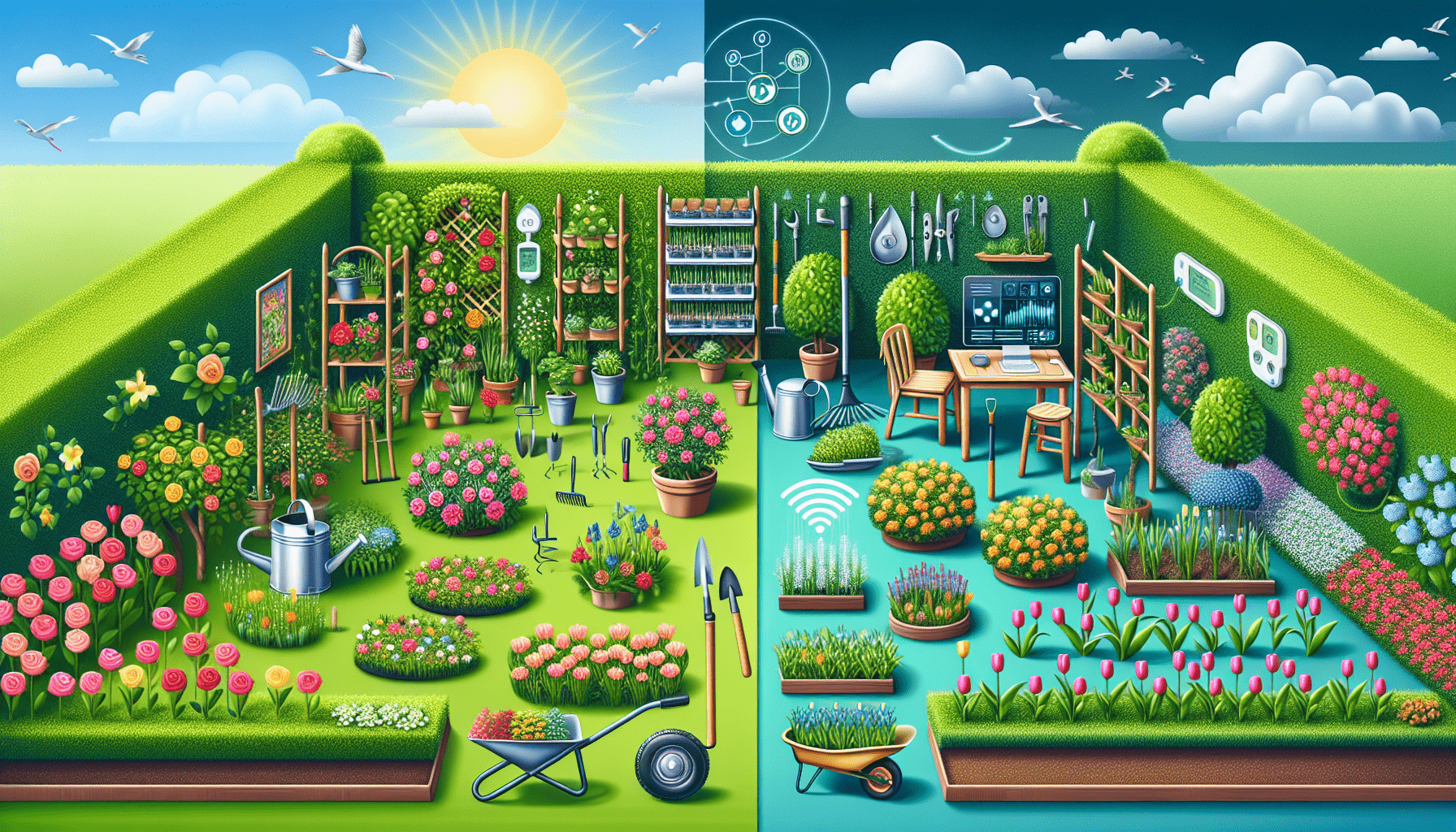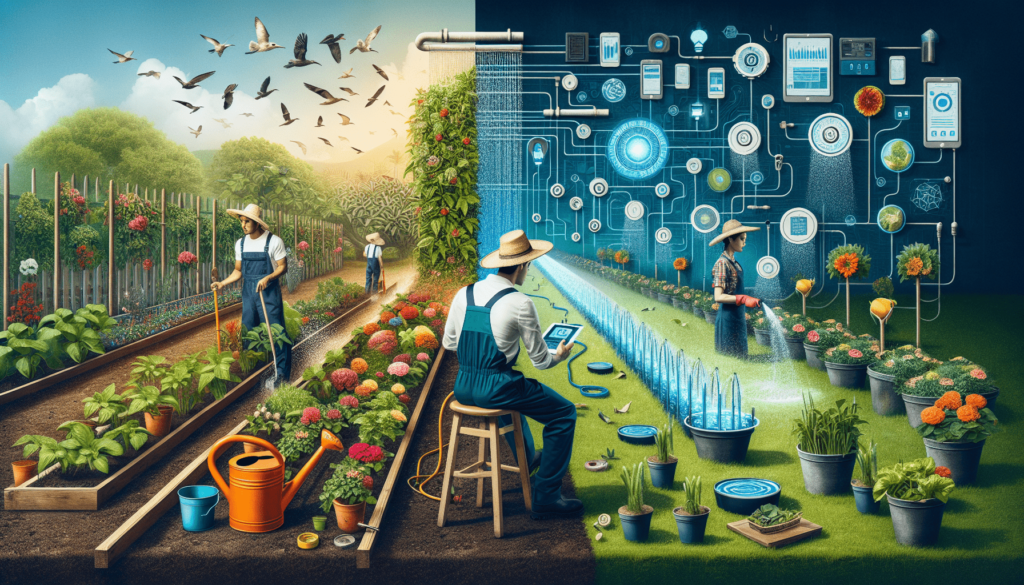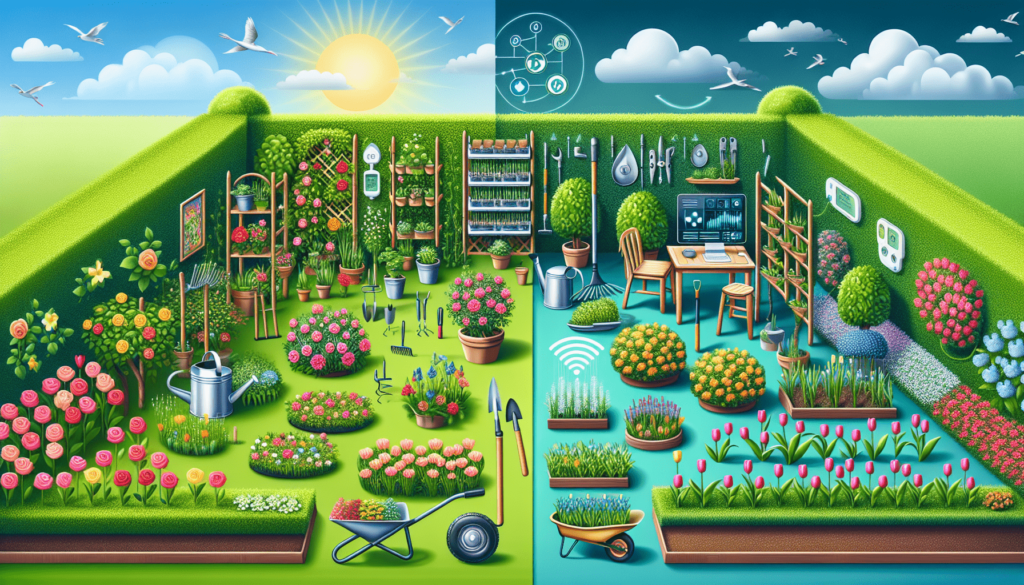
Welcome to “Upgrading Your Garden: From Traditional To Smart Irrigation”, an insightful article that offers you a new way of looking at gardening. We’ll introduce you to smart irrigation, an innovation that’s not only eco-friendly but also convenient for your busy lifestyle. Imagine being able to control your garden watering system from your smartphone, even when you’re on vacation or stuck at work. Get ready to revolutionize the way you nurture your plants, save water, and gain more time for yourself. Now, let’s dive into this exciting era of smart gardening! How many hours have you spent watering your garden manually, meticulously ensuring each plant receives just the right amount of water to thrive? Well, what if we told you that a technology could manage that for you, automatically adjusting watering levels based on the requirements of each plant and the current weather? Welcome to the age of smart irrigation! This article is about upgrading your garden from traditional to smart irrigation, revealing how easy it can be to save time, conserve water, and maintain healthier plants in the process.

What is Smart Irrigation?
Smart irrigation is a technology that utilizes a network of sensors and controllers to automate the watering of your garden or lawn. It evaluates the needs of your garden and adjusts watering levels accordingly, taking into account factors such as the plant’s water requirements, soil conditions, and weather predictions.
It’s a surefire avenue for not only decreasing water waste, but also improving the growth of your plants and reducing the time and effort you have to put into watering manually.
A Brief Overview of Smart Irrigation Systems
There are different types of smart irrigation systems, but most include sensors that measure soil moisture or evapotranspiration (the process of water evaporating from the soil and being absorbed by plants). Controllers are then used to adjust the watering schedule appropriately.
Typical systems also incorporate some form of weather monitoring, either through integrated weather sensors or by connecting to local weather forecasts online. This enables the system to adjust watering times based on rainfall forecasts, preventing unnecessary watering.
Benefits of Smart Irrigation
Making the jump from traditional irrigation to a smart system can seem daunting, but the benefits are substantial. Here’s why you might want to consider the transition.
Water and Cost Savings
With a precise and tailored watering system in place, you won’t be over-watering your plants anymore, leading to a reduction in water consumption. This is not only beneficial for the environment, but also for your water bills!
Healthier Plants
Smart irrigation systems provide water based on the needs of your plants, not a pre-set schedule. This means your plants are always getting the right amount of water – not too much and not too little – which results in healthier, more robust growth.
Conservation of Time & Effort
Instead of spending countless hours watering your garden by hand, you simply let the smart system do all the work. The system will automatically water all your plants, freeing you to tackle other tasks, or simply to relax and enjoy your garden.

Choosing a Smart Irrigation System: Key Features to Consider
Now that you’re aware of the benefits of smart irrigation, let’s explore some of the key features to consider when choosing a system for your garden.
Weather Monitoring
This feature allows your smart irrigation system to adjust itself according to the weather. If it’s going to rain, for example, the system can delay watering so as not to waste water. Likewise, if temperatures are high for several days, the system may increase watering to counteract the effect of evaporation.
Soil Moisture Sensors
Soil sensors measure the moisture level in the soil and send this data back to the system controller. If the soil is already moist, the system won’t water, hence saving a significant amount of water over time.
Wi-Fi Connectivity
Many smart irrigation systems feature Wi-Fi connectivity, allowing you to control and monitor your system remotely from your smartphone or computer.
How to Install Smart Irrigation Systems?
Don’t worry, installing a smart irrigation system isn’t as daunting as it might seem, and this section will guide you through the basic steps.
Start with a Plan
Planning is essential. Draw out a map of your yard, marking the places where you want to install the sprinklers and sensors. This will help you determine the equipment you need and how to distribute it most effectively.
Prepare the Necessary Components
Purchase your chosen irrigation system and gather all necessary tools in advance. Each system will usually include sensors, a controller, and sprinklers or drippers. The toolkit should ideally include digging and cutting tools, among others.
Install the Irrigation Components
From there, follow the manufacturer’s instructions to install the irrigation components in your garden. This typically involves digging trenches, laying down the irrigation pipes, and installing the sprinklers, sensors, and controller.
Setup the Software
Once the physical setup is done, the final step is to calibrate your system using the accompanying software. Set your watering schedules, input your weather parameters and plant types, and you’re good to go!
Making the Leap to a Smarter Garden
In conclusion, a smart irrigation system is a fantastic investment for any gardener. Not only can it save you money and time, it’ll also encourage healthier plant growth and contribute to water conservation efforts. So why wait? Embrace the convenience, savings and environmental benefits of smart irrigation today! Remember, every drop of water saved is a step towards a sustainer future.
